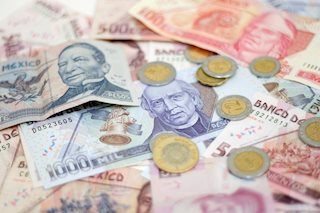USD/MXN moves below 19.00 despite an unexpected rate cut by Banxico
|
- USD/MXN continues its losing streak despite a rate cut by Banxico on Thursday.
- Mexico's 12-Month Inflation rose to 5.57% in July, the highest reading since May 2023.
- The US Dollar could receive support from the rising safe-haven flows amid heightened Middle-East tensions.
USD/MXN extends its losing streak for the third successive session, trading around 18.90 during the late Asian hours on Friday. This decline comes despite the Bank of Mexico's (Banxico) unexpected decision to cut the benchmark rate to 10.75% from 11.00% at Thursday’s meeting.
Banxico hinted at possible further rate adjustments, citing ongoing inflationary risks. The 12-Month Inflation Rate rose to 5.57% in July, up from 4.98% previously, and matching market estimates. This is the highest reading since May 2023.
Meanwhile, Core Inflation increased by 0.32%, slightly above the forecast of a 0.29% rise. Headline Inflation also rose by 1.05% in July, the largest increase in nearly three years, and slightly above the estimated 1.02% advance.
The US Dollar Index (DXY), which tracks the value of the US Dollar (USD) against six major currencies, edging lower to near 103.20. The decline in US Treasury yields is exerting additional pressure on the Greenback, with yields standing at 4.01% and 3.97%, respectively, at the time of writing.
The US Dollar faces challenges amid increasing expectations that the Federal Reserve (Fed) may implement a quarter-basis point rate cut in September. Traders evaluate mixed signals from the US economy, trying to determine whether it will experience a soft landing or slip into a recession.
The downside of the Greenback could be limited due to rising safe-haven flows amid heightened geopolitical tensions in the Middle East. Israeli forces intensified their airstrikes on the Gaza Strip, resulting in at least 40 casualties on Thursday, according to Palestinian medics.
This escalation has further intensified the conflict between Israel and Hamas-led militants, as Israel prepares for the possibility of a broader regional conflict following the killing of senior members of militant groups Hamas and Hezbollah.
Mexican Peso FAQs
The Mexican Peso (MXN) is the most traded currency among its Latin American peers. Its value is broadly determined by the performance of the Mexican economy, the country’s central bank’s policy, the amount of foreign investment in the country and even the levels of remittances sent by Mexicans who live abroad, particularly in the United States. Geopolitical trends can also move MXN: for example, the process of nearshoring – or the decision by some firms to relocate manufacturing capacity and supply chains closer to their home countries – is also seen as a catalyst for the Mexican currency as the country is considered a key manufacturing hub in the American continent. Another catalyst for MXN is Oil prices as Mexico is a key exporter of the commodity.
The main objective of Mexico’s central bank, also known as Banxico, is to maintain inflation at low and stable levels (at or close to its target of 3%, the midpoint in a tolerance band of between 2% and 4%). To this end, the bank sets an appropriate level of interest rates. When inflation is too high, Banxico will attempt to tame it by raising interest rates, making it more expensive for households and businesses to borrow money, thus cooling demand and the overall economy. Higher interest rates are generally positive for the Mexican Peso (MXN) as they lead to higher yields, making the country a more attractive place for investors. On the contrary, lower interest rates tend to weaken MXN.
Macroeconomic data releases are key to assess the state of the economy and can have an impact on the Mexican Peso (MXN) valuation. A strong Mexican economy, based on high economic growth, low unemployment and high confidence is good for MXN. Not only does it attract more foreign investment but it may encourage the Bank of Mexico (Banxico) to increase interest rates, particularly if this strength comes together with elevated inflation. However, if economic data is weak, MXN is likely to depreciate.
As an emerging-market currency, the Mexican Peso (MXN) tends to strive during risk-on periods, or when investors perceive that broader market risks are low and thus are eager to engage with investments that carry a higher risk. Conversely, MXN tends to weaken at times of market turbulence or economic uncertainty as investors tend to sell higher-risk assets and flee to the more-stable safe havens.
Information on these pages contains forward-looking statements that involve risks and uncertainties. Markets and instruments profiled on this page are for informational purposes only and should not in any way come across as a recommendation to buy or sell in these assets. You should do your own thorough research before making any investment decisions. FXStreet does not in any way guarantee that this information is free from mistakes, errors, or material misstatements. It also does not guarantee that this information is of a timely nature. Investing in Open Markets involves a great deal of risk, including the loss of all or a portion of your investment, as well as emotional distress. All risks, losses and costs associated with investing, including total loss of principal, are your responsibility. The views and opinions expressed in this article are those of the authors and do not necessarily reflect the official policy or position of FXStreet nor its advertisers.